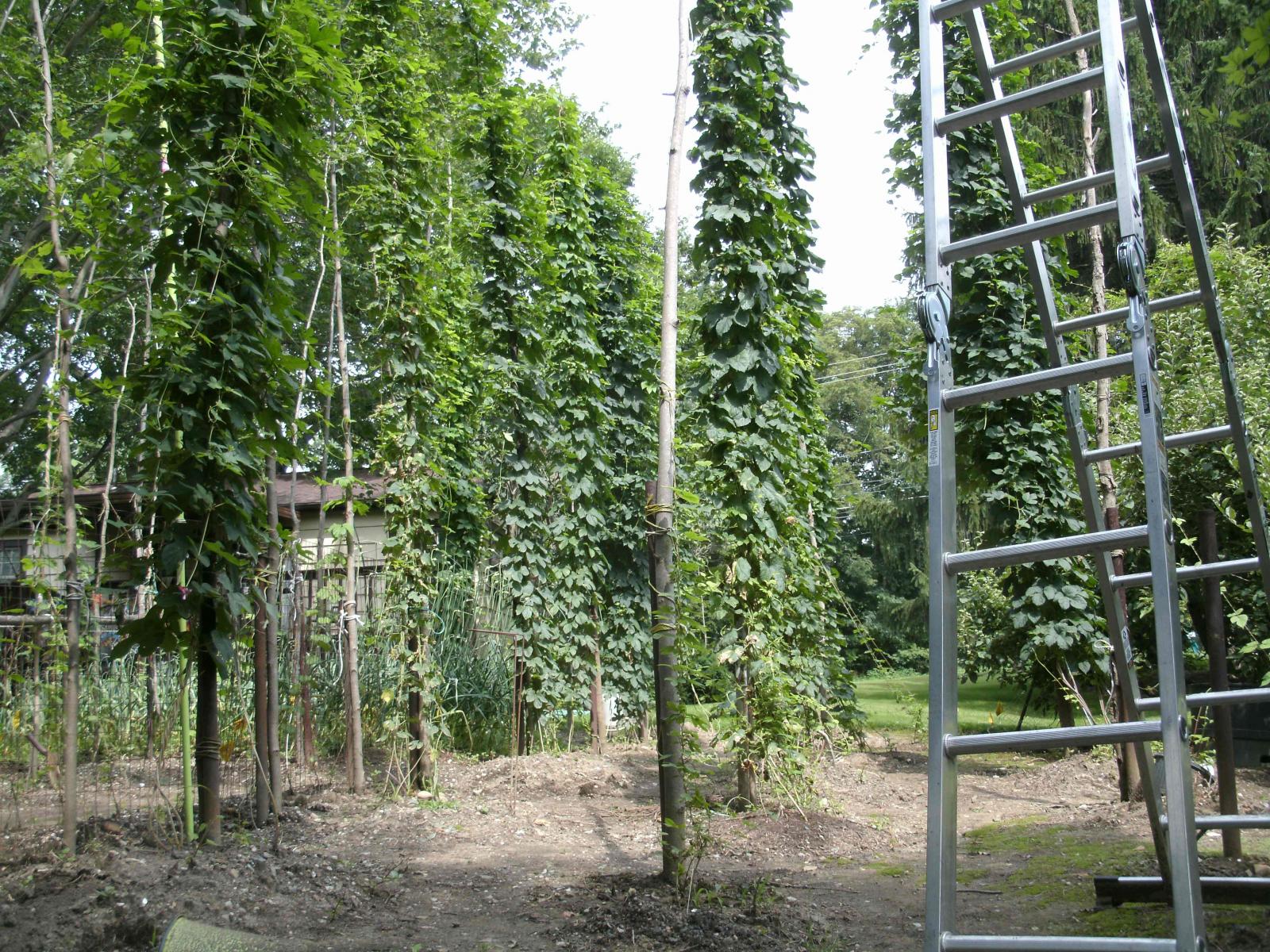alane1
Well-Known Member
Anyone know what this is?View attachment 287560 Another seedling with spotsView attachment ImageUploadedByHome Brew1435614078.577776.jpg

I'm very curious to see what sort of hop profile they have. I know I may have a long wait to find out but that's part of the fun, I think. I'd also like to see what I can do with the males, assuming there are any. Maybe build a hop patch somewhere.
@TomEl
... to germinate 12 Cascade bastard children from seed.

Checking my babies today and saw this. Looks to me like male parts starting to grow. Am I right?
Checking my babies today and saw this. Looks to me like male parts starting to grow. Am I right?


Hopefully in a year or two he'll be as handsome as Rex.
Hopefully in a year or two he'll be as handsome as Rex.


Say hello to a few hundred friends of mine. First year buddies getting their grapple on. Wrestling for the best spot in the house.
Interesting... That's one way to sort out which have the most vigor. How do you plan to separate the survivors next year?
Well, seeing as how there is an established DM infestation in my hopyard...it'll very simply be relative performance under disease pressure.
There is no way that you will be able to know which plant is which at the ground level and be able to select them. Not with a few hundreds of plants! I have one spot in which I put 6 cuttings last year from different plants... I put them together because I lost their identification tag. They are a mess, I cannot separate 6 plants. You are better to take some VERY long vacations to untangle everything and identify them.
Looking good! I'm in the midst of harvesting a bunch of wild hops here in KC, all have seeds. I'm trying to keep the harvest from each wild plant separate so that I can evaluate the aroma, and know which parent the seed came from, but it's real tricky when they're growing together on a bush or hedgerow. There are signs of mildew, but most plants appear tolerant or totally resistant. Maturity is pretty late, though that could be due to uneven sun exposure. I'm pretty certain that a number of these specimens are H. Lupulus Var. Pubescense from the velvety undersides of the leaves.
I also took some pollen from a wild male (not sure if Pube or Lupuloides subspecies) and pollinated my Teamaker flowers, hoping to get some seeds. Teamaker has great aroma character, noble-ish, disease resistant and dwarf, so I think it could be an interesting cross.
I'm starting a website about collecting, breeding, and eventually commercializing the midwestern Pubescense subspecies. My website sucks right now, but if you want to check it out it's PubeHops dot com . I want to add a foraging guide and subspecies ID guide.
... but if you want to check it out it's PubeHops dot com . I want to add a foraging guide and subspecies ID guide.
I spent this weekend cleaning up the hopyard. Few plants made the cut, and those that did replaced cultivars I use infrequently. Those that were dug up will be replanted by other selections that will be given room to grow and prosper (hopefully).
I've got enough variation present (I hope!) that enough gain should be made over the next several years.
I let Mother Nature do the work, I started out with well over a hundred seedlings and I'm down to about 6 plants that survived.
Before they even make it to the hop yard I want to make sure they have survival genes. Even after I thought they were all sorted out one of them made a comeback View attachment 306479
Enter your email address to join: